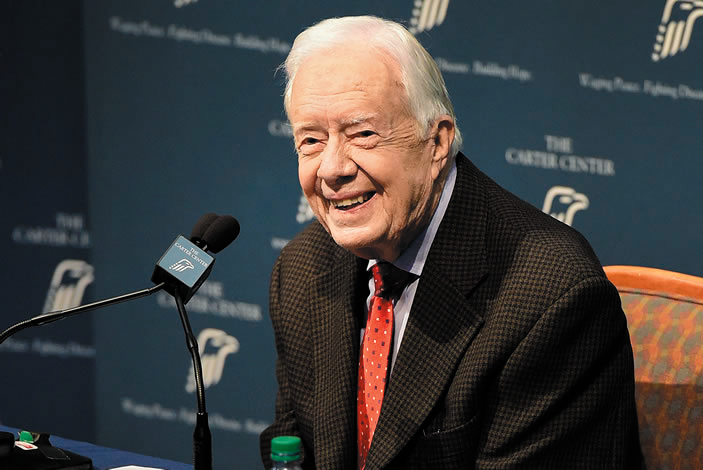Countdown to Zero
Guinea worm cases down to a few worldwide
Guinea worm disease, a scourge so ancient as to be found in Egyptian mummies, is poised to be wiped out.
When it is, it would be the second human disease in history to be eradicated, after smallpox.
People get Guinea worm by drinking contaminated stagnant water, ingesting larvae that become parasitic worms. A worm can grow inside the body for up to a year, reaching a length of two to three feet before it finally emerges through a burning blister. There is no limit to the number of worms someone can acquire. Emerged worms must be gently pulled out, centimeter by excruciating centimeter, which can take up to a month.

"I'd like the last Guinea worm to die before I do."
Jimmy Carter
Today, due to 30 years of unwavering efforts directed by the Carter Center, there are only a handful of known cases of Guinea worm disease remaining, in one country—Chad. This feat has been accomplished with no treatment, no vaccine, no acquired immunity, and no cure.
The only path to success was to convince deeply traditional people in remote and often conflict-torn regions of the world to change the way they have collected and consumed water for generations.
"Look at how hard it is to convince people in the United States to quit smoking or eating super-sized meals at McDonald's," says Kelly Callahan, one of scores of alumni of the Rollins School of Public Health who have played key roles in the Carter Center's Guinea worm eradication program. "Behavior change is hard in the best of circumstances, and with Guinea worm, we're not dealing with the best of circumstances."
When Carter, a University Distinguished Professor at Emory, publicly disclosed his cancer diagnosis in 2015, he said, "I'd like the last Guinea worm to die before I do." Now 92 and in remission after treatment at Emory's Winship Cancer Institute, Carter may just get his wish.
Decades of educating at-risk populations, distributing filters for drinking water, and keeping people with emerging worms out of water sources are on the verge of paying off. But the last mile is always the hardest. "If only three people out of more than 7 billion have a disease, it is hard to galvanize the support needed to stay the course," says Adam Weiss, another Rollins alum working on the project. "It comes down to keeping up the level of financial and human resources, which we will do. We are not going to give up."
Email the Editor



